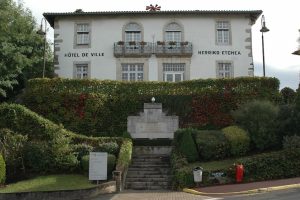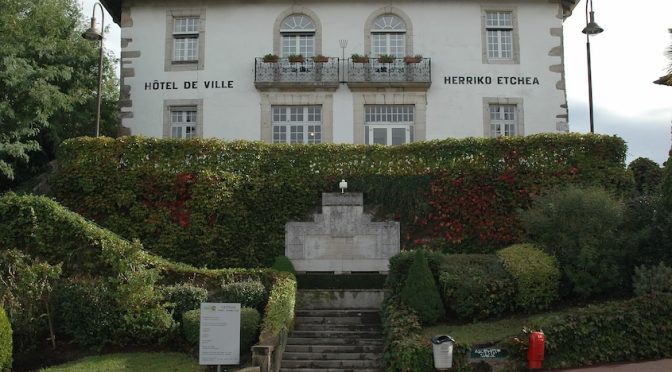The Basques have a long association with democracy. John Adams noted their unique government and how they had preserved a voice of the people within it. Adams mostly saw Hegoalde. But Lapurdi, in Iparralde, also had its own unique institutions that represented the people, where every town had a vote in the decisions of the province. And, in particular, nobility and clergy were not allowed to participate.

- The Biltzar was equivalent to the Juntas Generales, or General Meetings, of other parts of the Basque Country. Like in other areas, the parish or municipality formed the foundation of the Biltzar. Each parish, which included uncultivated lands, meadows, forests, waters, roads, pastures, hunting and fishing, was administered by the owners of houses and their heirs. If the owner was a woman, then her husband or eldest son represented her. Nobles and clergy could attend, but they could not participate.
- The word Biltzar seems to come from a combination of bil and zahar, and might mean “meeting of the old people.”
- The Biltzar was held in the town of Ustaritz. A trustee, with a two-year term, was appointed to lead the Biltzar. He could call on the Biltzar to assemble whenever he deemed necessary. Eight days before the assembly, he would send the mayors of each town a list of items to be discussed and each town would deliberate their position. Representatives sent by each town to the Biltzar didn’t actually have the power to vote, they simply bore the vote decided on by their respective communities. Thus, the Biltzar was a democratic institution that directly reflected the views of the municipalities. The trustee would then implement the decisions made by the Biltzar.
- The only taxes that the people of Lapurdi were subject to were those voted on by the Biltzar. The Biltzar also negotiated the amount of tax that had to be paid to the crown. One of the primary functions of the Biltzar, then, was to maintain financial autonomy of Lapurdi. The trustee also had access to 1000 men to help defend the province if needed.
- The oldest Biltzar for which we have documentation happened on January 24, 1567. We don’t know of another until 1593. It is thought, though there is no evidence, that the Biltzar goes back much further in history.
- While we don’t know much about the origins of the Biltzar, we do know about its demise. The last Biltzar was held on November 18, 1789 in the middle of the French Revolution. This Biltzar asked the Estates-General to preserve the Biltzar for Lapurdi or, at the very least, to combine Lapurdi, Zuberoa, and Nafarroa Beherea into one Basque department. The Biltzar also selected the Garat brothers to represent them at the Estates-General. The Estates-General declined both requests and instead created a new department in which the three Basque provinces were combined with Bearn, effectively ending the Biltzar.
- There had been many attempts beforehand to curtail the power of the Biltzar and give the crown more power over the province, but all of those attempts failed. In one case, Le Camus de Néville wrote to Necker, the minister of Louis XVI, that “I suggest that you change nothing about the administration of this province. These little people, so to speak, stubbornly follow their ancestral laws. We would needlessly publish new regulations which would go against the morals of the Basques.”
A full list of all of Buber’s Basque Facts of the Week can be found in the Archive.
Primary sources: Auñamendi Entziklopedia. BILTZAR. Available at: https://aunamendi.eusko-ikaskuntza.eus/en/biltzar/ar-14218/; Lapurtarren Biltzarra, Wikipedia; Biltzar, Wikipedia
Discover more from Buber's Basque Page
Subscribe to get the latest posts sent to your email.


